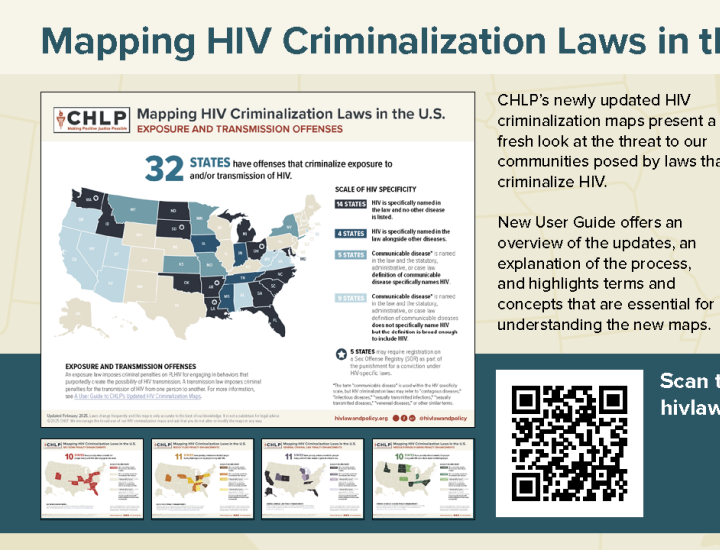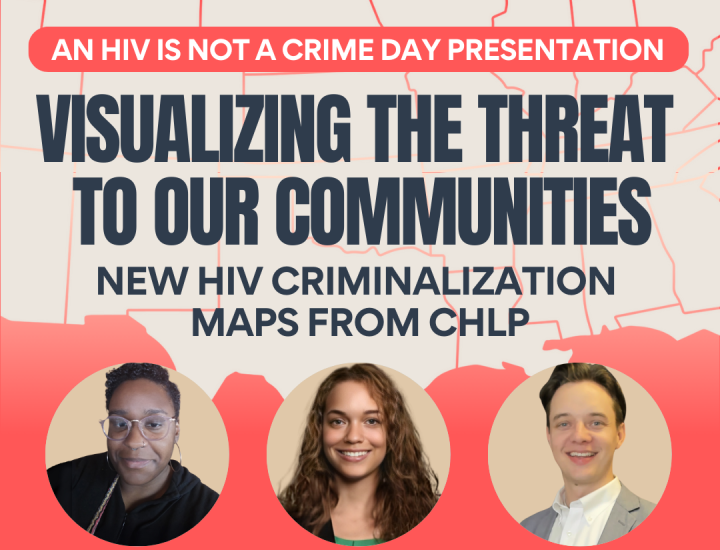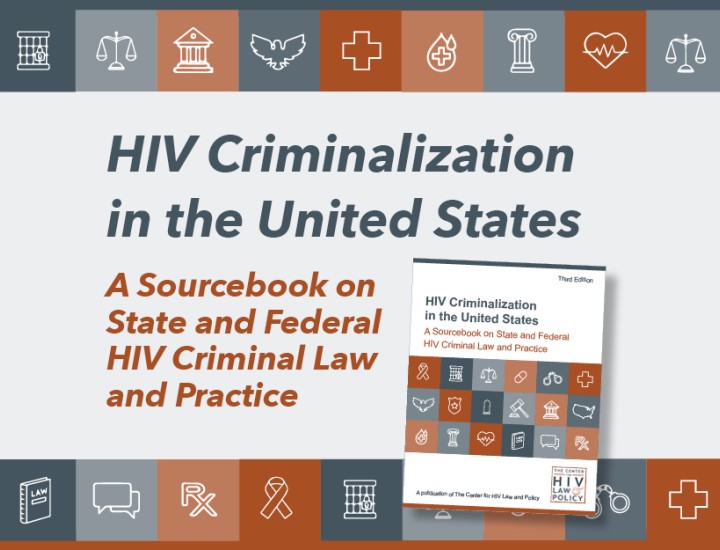Published February, 2025
Mapping HIV Criminalization Laws in the U.S., CHLP (2025)

In the United States, 32 states criminalize people living with HIV (PLHIV) and 28 states have harsh criminal penalty enhancements that elevate charges based on a person’s knowledge of their HIV status. For more than a decade, CHLP has produced an HIV criminalization map that portrays the variety and prevalence of these laws used to prosecute and punish PLHIV. This new release represents a substantial update resulting from a comprehensive research process and updated methodology based on CHLP’s Sourcebook on State and Federal HIV Criminal Law and Practice.
Each new map uses an HIV specificity scale to identify laws that target PLHIV and other stigmatized health conditions through direct and indirect language. In addition to the novel HIV specificity scale, the new maps provide greater detail on enhancements to provoke a more nuanced discussion on the threat of HIV criminalization, especially for people with intersecting marginalized identities. CHLP produced A User Guide to CHLP’s Updated HIV Criminalization Maps that provides an overview of the updates, an explanation of the update process, and terms and concepts that are essential for understanding the new HIV criminalization maps.
On February 26, 2025, CHLP’s Kytara Epps, Jada Hicks, and Sean McCormick hosted a webinar to walk through the changes, discuss the update process, and highlight important features of the new maps, including key definitions and concepts.
Update: On November 12, 2025, CHLP issued updates to the map set to account for recent legislative changes as well as ongoing research into the nuances of HIV criminalization.
The newly added Donation Offenses map depicts laws criminalizing the donation or sale, or attempted donation or sale, of blood, blood products (such as plasma or platelets), semen, tissue, organs, or other bodily fluids. These donation offenses exist within exposure offenses and distinct provisions. Despite recent rule changes to organ donation by PLHIV, these donation offenses are present at the federal level and in 14 states.
Earlier this year, North Dakota and Maryland became the fourth and fifth states, respectively, to fully repeal their HIV-specific exposure offenses. These updates are reflected on the Exposure and Transmission Offenses map. Despite these significant milestones, the overall count of states with HIV-specific exposure and transmission laws remains the same at 32. This is because both states have separate laws, located in their health codes, that continue to target people living with HIV using “communicable disease” language.
- In North Dakota, there is an offense that punishes anyone who, "knowing that the person is infected with a sexually transmitted disease, willfully exposes another person to infection."
- In Maryland, there is similarly an offense that imposes criminal punishment on people living with an "infectious disease" who either are in a public place and don't take "proper precautions" or transfer "any [used] article" to another without sterilizing it.
Because HIV is explicitly covered under the definitions of “sexually transmitted disease” in North Dakota and “infectious disease” in Maryland, these laws remain a criminalization threat for PLHIV and remain shaded on the map. However, the laws use less direct language, so they have been lowered on the HIV-specificity scale.
Summary of changes:
- A new Donation Offenses map was created.
- On the HIV-specific Exposure and Transmission Offenses map, North Dakota and Maryland were moved from the highest specificity to the second lowest specificity.
- On the Needle and Syringe Sharing Penalty Enhancements map, the shading for North Dakota was removed.
- Definitions and key examples were added to the User Guide.
CHLP encourages the broad use of our HIV criminalization maps. These maps are designed to support efforts to challenge laws and to inform communities, policymakers, and legal professionals about the landscape of HIV criminalization in the United States. If you choose to use our maps in presentations, reports, or other materials, please ensure that the Center for HIV Law and Policy (CHLP) is appropriately credited. Attribution should include our full name and a link to our website or the original source of the map. Additionally, to maintain the integrity and accuracy of the information provided, we ask that you do not alter or modify the maps in any way. If you have questions about their content or would like to collaborate on specific applications, please reach out to CHLP for further guidance.


